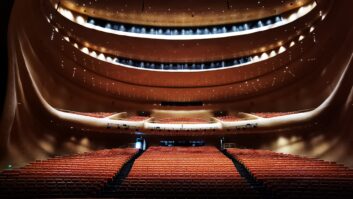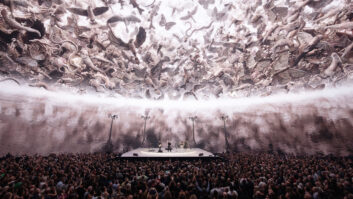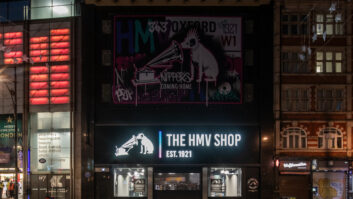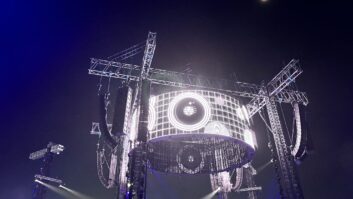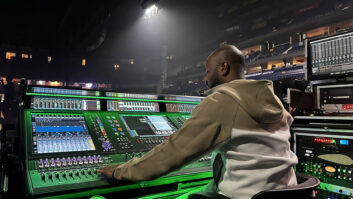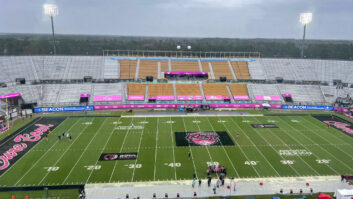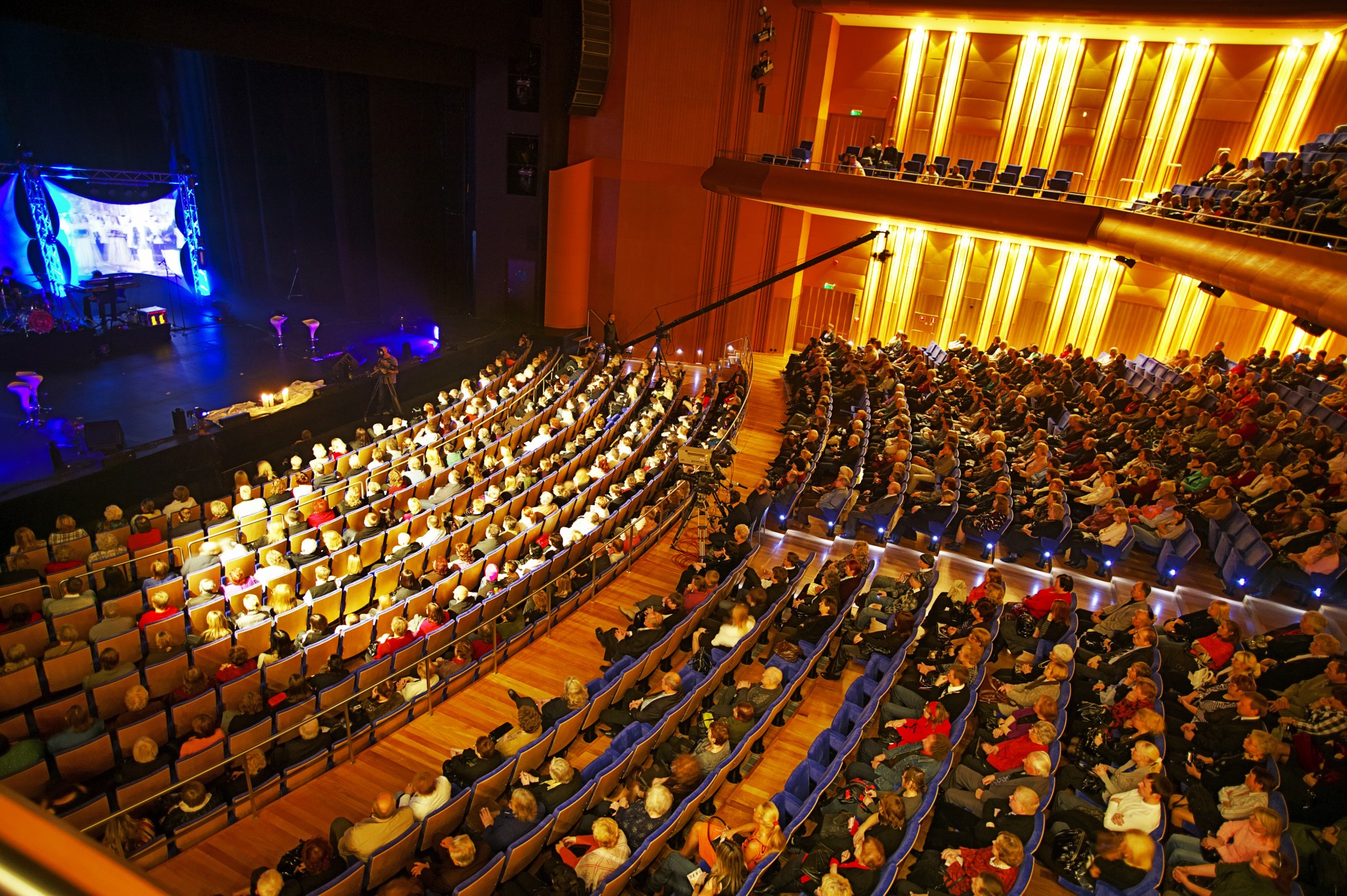
Sir Simon Rattle’s recent call for a new concert hall to be built in London has prompted a wider debate about the standards and suitability of modern musical performance spaces. But to what extent can new technology and sophisticated acoustic treatments make a difference, and are truly effective multipurpose concert halls now achievable? David Davies finds out.
As one of the most influential figures in classical music today, with four decades of senior roles at some of the world’s leading orchestras to his credit, Sir Simon Rattle’s opinions are never likely to be under-reported. But even so, it would be fair to say that the principal Berlin Philharmonic Orchestra chief conductor and forthcoming (from late 2017) London Symphony Orchestra (LSO) music director’s recent comments about concert halls in London and Munich have ruffled their fair share of feathers.
Speaking to the BBC in early 2015, shortly before his appointment at the LSO was made public, Rattle said that both cities lacked concert halls able to achieve optimum results for classical music. “The music-lovers of London and the country would deserve to have something where also the orchestras can flourish. You have no idea how wonderful an orchestra like the LSO can sound in a great concert hall,” he remarked.
Close observers will be aware that the LSO’s home is none other than London’s Barbican. This venue alone remains the subject of contrasting opinions, while there has also been plenty of debate elsewhere about other major European concert halls – particularly those built after what we might term the ‘high peak’ of the classical tradition.
In the UK more generally, The Sage Gateshead, Manchester’s Bridgewater Hall and Symphony Hall, Birmingham are arguably the only major additions to the landscape for orchestral performance during the last 25 years – and all of these are far from single-purpose, hosting many types of music as well as other live entertainment.
Built in an era with vastly improved acoustic prediction and modelling capabilities, as well as highly directive loudspeaker technologies, these venues have won widespread acclaim. But to what extent is it really possible to create a hall suitable for many different kinds of music, and what further techniques might be coming down the line to allay the clearly enduring concerns of Sir Simon and his peers?
RT challenges
There is a general consensus that the greatest obstacle to creating a venue suitable for multiple musical styles is the need to deliver variable reverberation times (RTs). Jay Fullmer, applications expert at JBL Professional, neatly summarises the primary differences in play.
“It is well-known that the optimum reverberation time for a classical music venue is longer. The Boston Symphony Hall, for example, has a reverberation time of approximately 1.9 seconds, which is considered to be near-ideal for large symphony reproduction,” says Fullmer. “As the reverberation times shorten, the ideal use for the hall changes. A room with a 1.5-second reverb time is typically better for choral music, whereas a 1.2-second room works better for chamber music and most solo instruments. For pop and rock music acceptable reverb times should fall somewhere between 0.5 and 1.2 seconds, with high absorption coefficients extending well down below 100Hz.”
It stands to reason that the best possible result for a specific style will be a venue built entirely to service its requirements. But while there are some issues that are always tricky to address – for example, “venues with focused reflection like a dome ceiling”, says Meyer Sound director of system optimisation Bob McCarthy – there are now many techniques that can be employed to deliver significant improvements to existing venues, and to allow new-builds to be properly multifunctional.
Over the past 10 years, active acoustical systems such as Meyer Sound’s Constellation – which utilises a patented algorithm, advanced digital processing and miniature transducer technology to allow the acoustical properties of a room to be altered to suit the nature of the event taking place – have inevitably assumed greater prominence in this regard.
“Physical acoustics have a fixed character; it’s like one jacket that fits only a few types of outfits,” says McCarthy. “Active acoustics is like a jacket that changes colour and can match whatever you throw its way. It gives venues the flexibility to make changes instantly to provide the optimal sonic qualities for a programme.”
Among the benefits of Constellation, he adds, are its ability to “provide early reflections and reverberation to add sonic immersion to a space so the audience can feel closer to the stage. The flexibility to adjust a room’s sonic properties instantly is immensely crucial to many venues. Constellations can also provide spectral balance in spaces that have too much high or low.”
Scalable systems
Another major player, Yamaha, has just released the third version of its AFC3 (Active Field Control) system, which uses microphones, FIR filters and sophisticated DSP to adjust and enhance the architectural acoustic characteristics of a venue. Ron Bakker, who is systems marketing manager for commercial audio/pro audio at Yamaha Music Europe, is in no doubt about the latterday ability to create a truly multipurpose concert hall.
“This is now very well possible without a doubt,” he says. “We have installed systems in auditoriums with reverberation times of less than half a second – even on the dry side for rock ’n’ roll concerts and drama. Enhancing this to a natural response for acoustic performances is no problem, and enhancing this to a beyond belief response is also easy (although we normally don’t do that – our goal is to keep the enhancement natural).”
Explaining the principles behind AFC3, Bakker notes that the technique applies a simple four-bus structure to support systems of all sizes. “Large or small, in all cases only four microphones are used to generate the diffuse reverberation field,” he says. “The smallest system we installed has only eight speakers, the largest system has over 100 speakers for reverberation – and in both cases the result is a perfect and absolutely natural acoustic response. Apart from a broad scalability of the reverberation system, subsystems are often added to provide support for dedicated issues such as a lack of lateral reflections, poor ensemble conditions on stage, and poor acoustic conditions for the under-balcony seats.”
